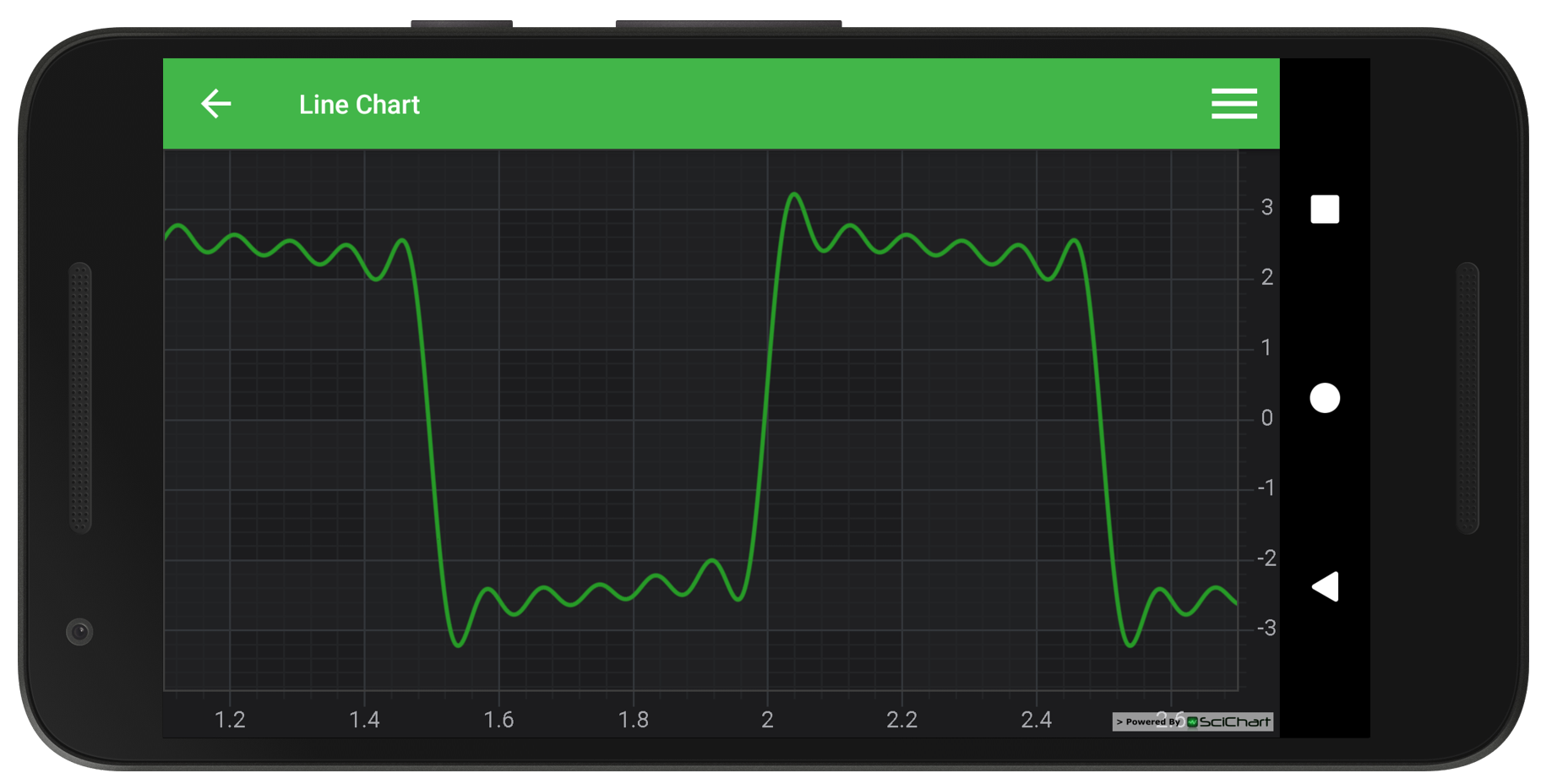Android Chart - Examples
SciChart Android ships with ~90 Android Chart Examples which you can browse, play with, view the source-code and even export each SciChart Android Chart Example to a stand-alone Android Studio project. All of this is possible with the new and improved SciChart Android Examples Suite, which ships as part of our Android Charts SDK.
Line chart is one of the most commonly used charts on all platforms across many industries. This example demonstrates how to create an Android Line Chart in code. The FastLineRenderableSeries can be used to render XyDataSeries, XyyDataSeries (renders Y values), XyzDataSeries, HlcDataSeries and OhlcDataSeries(renders Close values) in Java.
SciChart Android supports millions of points out of the box, and is suitable for use in real-time scientific, medical and trading applications.
Tip!
You can be very flexible and change the Line appearance as follows:
– Changing its’ color and thickness with setStrokeStyle methods of FastLineRenderableSeries
– Make it dashed or digital line (step line) using the setIsVisible(), setIsDigitalLine() methods of FastLineRenderableSeries.
– Customize by adding either predefined or custom data-point markers on a line series using the PointMarker API.
Please note that custom data-point markers will be same very performant as the same bitmap rendering as in our Scatter-Charts is used.
The full source code for the Android Line Chart example is included below (Scroll down!).
Did you know you can also view the source code from one of the following sources as well?
- Clone the SciChart.Android.Examples from Github.
- Or, view source and export each example to an Android Studio project from the Java version of the SciChart Android Examples app.
- Also the SciChart Android Trial contains the full source for the examples (link below).


